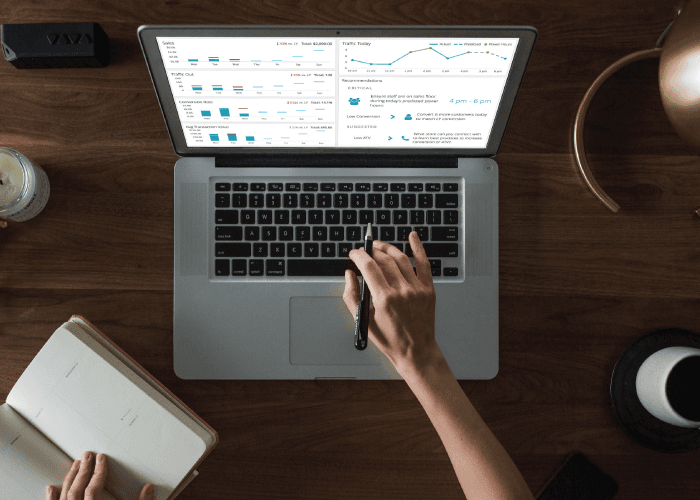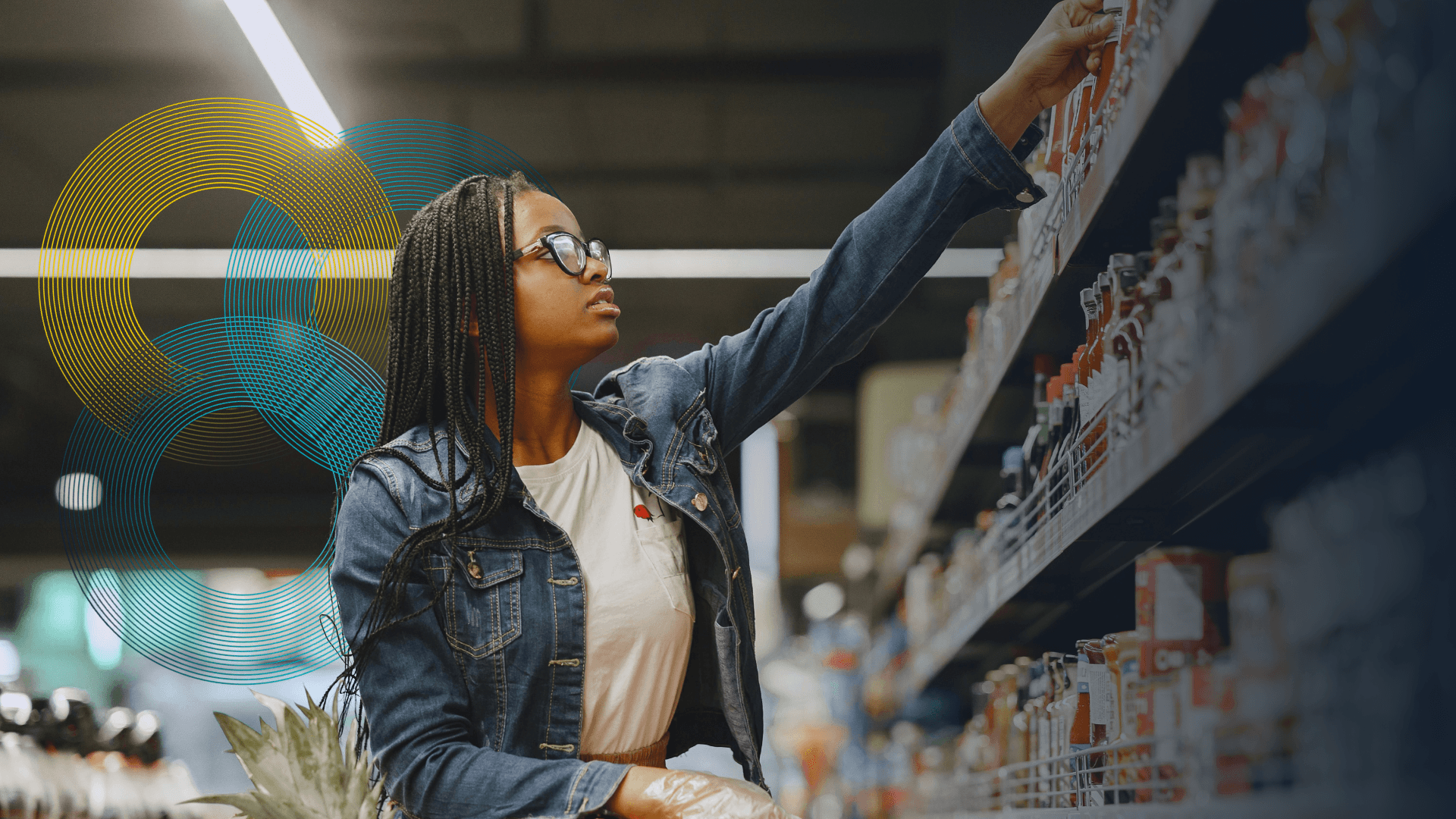2024 Retail Trends Worth Having On Your Radar

On this page
The retail landscape is poised for significant transformations in 2024, marked by dynamic shifts in consumer preferences, technological advancements, and a growing emphasis on sustainability. As we delve into the upcoming trends, one notable aspect is the resurgence of physical stores as robust marketing and acquisition channels. The convergence of in-person interactions with online conveniences is redefining the retail experience, a phenomenon exemplified by major players like Walmart, J.C. Penney, and IKEA investing billions in upgrading their stores. This blog explores this trend alongside two other pivotal developments: the continuous integration of artificial intelligence in both online and offline retail strategies and the escalating demand for a circular economy driven by heightened awareness of sustainability.
NEW eBOOK: The New Agenda For Growth: 5 Imperatives For Digital-Savvy Retailers
Increased Investment In Physical Stores
As the cost of customer acquisition continues to climb online, stores will serve as key marketing and acquisition channels. Research shows that 97% of brands are unable to accurately measure revenues from social media advertising because of Dark Social traffic. In stores, however, ROI can be easily calculated and cause-and-effect is simple enough to determine. By combining the strengths of in-person interactions with the convenience of online services, physical stores play a crucial role in customer acquisition, engagement, and fostering lasting brand connections.
Stores provide a tangible and immersive experience, allowing customers to interact with products directly, ask questions, and receive personalized assistance from knowledgeable staff in real time. Plus, the in-store environment fosters a sense of immediacy, enabling customers to make informed purchasing decisions on the spot. Physical stores also serve as convenient pick-up points for online orders, bridging the gap between the digital and physical retail realms to create seamless shopping experiences for customers.
In October, Walmart announced its “Store of the Future” concept, which aims to upgrade 1,400 stores with a hefty $9 billion investment. This investment in store upgrades will take place over a two-year period and will include new signage, brighter lighting, and digital screens, according to Reuters. Similarly, J.C. Penney has announced it will be spending more than $1 billion in the next few years to try to revive the more than 120-year-old department store chain after a couple of rocky years. Swedish furniture giant IKEA will also be expanding rapidly in the US with 8 new stores, 9 smaller studios, and 900 pickup locations. This pattern of store revival and reinvestment will undoubtedly pick up steam in 2024.
AI Buzz Will Continue, Online And Offline
Technologies like artificial intelligence will continue to shift ways of working in retail, as they have across countless other industries. It should be no surprise that AI is, of course, a 2024 retail trend stakeholders have to take note of. From content generation to acquisition efforts, AI can empower (and perhaps even finesse) critical brand functions.
Perhaps most importantly, AI offers retailers an opportunity to personalize marketing efforts without breaking the bank. This technology can be used to analyze huge sets of data (say, for example, loyalty program member data), and operationalize it across chatbots, email newsletters, marketing outreach, and personalized recommendations. By employing Al algorithms to analyze shopper data and behaviors, companies can suggest tailored products or services to individual customers in stores. This data can also be used to establish retail media networks (RMNs) or monetized as an adjacent income.
In 2023, browser extension shopping assistants like Honey used predictive analytics to alert customers to early Black Friday promotions tailored to their preferences, with a click-through rate 30% higher than average email campaigns, according to Forbes. Moreover, voice assistants like Amazon Alexa and Google Home let shoppers add items to digital carts and make purchases through conversational commands, reducing friction and simplifying the shopping process. There’s no sign of these multi-touchpoint shopping experiences slowing anytime soon, so adoption and innovation are essential.
WATCH NOW: Retail Experts On Data Monetization
Growing Demand For A Circular Economy
Increased transparency around sustainability and ethical business practices will feature prominently in the 2024 retail landscape. Case in point: as fast fashion steadily loses its appeal with shoppers investing in higher-quality pieces instead, circularity will continue to grow.
This trend is particularly prominent in the luxury sector. According to the 2023 Europe Luxury Report, 77% of shoppers in Europe have revealed they are interested in buying sustainable luxury products. Moreover, 51% of shoppers are willing to pay up to 10% extra for items sustainably made or shipped. This uptick in interest has largely been attributed to the Covid-19 pandemic. At home, consumers had time to consider their environmental impact and their relationship with the natural world. Now, retailers must take these concerns seriously, and present shoppers with options to help create a greener future.
Beyond fashion (and technology), this extends to any product’s packaging, sourcing, and repurposing. Consumer goods retailers are feeling the pinch to avoid landfill and participate in a more ethical supply chain. Digitalization is key to these efforts. The digitalization of logistics processes gives retailers the data, visibility, and control to coordinate a circular economy with partners in the supply chain. According to Maersk, only 53% of consumer product companies have significant or complete visibility into their own processes and only about 21% have visibility into their supplier processes. A blockchain platform or centralized data management system helps shine a light on these blind spots and helps pave the way for recycling and optimization initiatives.

Statista reports that the worldwide revenue of circular economy transactions, comprised of the categories secondhand, rental, and refurbished goods, was estimated to total roughly $339 billion in 2022. This was forecast to more than double by 2026. It’s no small wonder that this will have to be a key focus for retailers in 2024 and beyond.
Promotions Will Be More Competitive
Retailers across categories will undoubtedly find themselves in a race to the bottom. Covid-19’s impact on the supply chain meant that for a couple of years, retailers haven’t always had products to promote. Retailers have had to contend with global shipping delays, disruptions in production, and ongoing labor shortages. Now, with more stability on the cards for 2024, promotions are set to skyrocket.
Spendthrift shoppers who are dealing with the cost of living crisis will be on the lookout for the best deals. This means that an already-competitive market is about to get even more so. That being said, luxury and specialty retailers are unlikely to buckle under the pressure to promote. For example, Nike has recently announced that it will be moving away from promotions as a way to recover profitability.
FMCG retailers, however, will not have this luxury. A recent study shows that 53% of global consumers are actively looking to reduce spending on food and drink. This study continues to explain that while consumers will still seek out small indulgences, they’re looking for them at a lower price point. To get to the front of the pack, FMCG retailers will need to present competitively priced merchandise that communicates a feel of luxury (and bonus points for sustainability too!).
Critical here is that retailers maintain pricing consistency across all touchpoints. All brand platforms should reflect minimal price discrepancies. For example, merchandise sold online cannot be vastly more expensive than in stores, and vice versa. Because budgets are tight, shoppers are diligently researching prices before heading to checkout. In fact, Think With Google suggests that 53% of shoppers research before they buy to ensure they’re getting the best deal.
The trajectory for the year ahead strikes a balance between tradition and innovation. Physical stores are as resilient as ever and are evolving into strategic hubs for customer engagement and acquisition. Simultaneously, artificial intelligence is carving out its niche, revolutionizing personalized marketing efforts and shopper experiences both online and offline. Furthermore, the clarion call for sustainability is ringing louder, with consumers increasingly favoring products aligned with ethical practices and circular economy principles.
In this race for consumer attention and loyalty, retailers must also navigate the intricacies of a more competitive promotional landscape. Stability in the supply chain signals a resurgence of promotions, with shoppers, especially in the FMCG sector, on the lookout for compelling deals. The key lies in maintaining pricing consistency across all touchpoints, catering to the discerning shopper who researches prices before making a purchase. The stage is set for an exciting and transformative year in retail, where adaptability, innovation, and sustainability will be the guiding principles for success.
READ MORE: Retail Impact: Europe’s Move Towards Sustainable Fashion
About the author:

Ashton Kirsten, Global Brand Manager, RetailNext
Ashton holds a Master's Degree in English and is passionate about physical retail's unbridled potential to excite, entertain, serve, and solve problems for today's shoppers.




